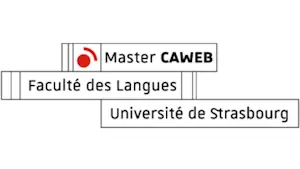The importance of a good translation and localization for the pharmaceutical industry

Generally speaking, localizing a product for a global market helps expand your market across borders. But when it comes to the global market, content localization for the pharmaceutical industry becomes an essential step.
Pharmaceutical companies are experiencing tremendous development. Emerging markets represent a huge opportunity to expand globally.
The worldwide population increases, ages, and thus faces more diseases and age-related ailments. When marketing overseas, companies have to communicate and make their products available in local languages. They also have to comply with local directives and regulatory requirements.
A 2011 study from the European Commission based on a Gallup survey of language preferences among Internet users in 23 E.U. countries, revealed that 42% said they never purchased products and services in other languages. Another study from Common Sense Advisory showed that, among 2,430 web consumers in eight countries, 72.4% would be more likely to buy a product with information in their own language. Needless to say that consumers are even more cautious when dealing with pharmaceutical products. They need to have all the necessary information available in their language to guide them in their choice.
What exactly is content localization?
To this day, localization remains an unknown concept for most people.
If they are familiar with translation, they do not precisely perceive what lies behind localization. Language translation is, in fact, only a part of localization. Translation only deals with text, finding equivalent terms in the target language. Localization is a more comprehensive, involved process. Localizing a product or service means tailoring it or customizing it so that that it will look as if it had been developed within the local culture.
Localizing content will include adjusting color preferences, time zones, currencies, geographic references, units, spelling, date formats, text length, etc. It will also deal with the legal and regulatory compliance requirements which apply in the local market. For instance, localizing content for America would be different than localizing content for Australia or the United Kingdom, even if English is the official language for those countries. Sometimes Transcreation (Translation + Creation) might also be necessary during the Marketing or Advertising phase to adapt creative messages, slogans or find new product names.
Localization for pharmaceutical industry: why do companies need to localize their content?
What is “pharmaceutical content”?
Throughout a drug’s lifecycle, from the preclinical stage to sales and marketing, much information material will be produced. It will include protocols, data sheets, patient information pamphlets, legal documents, Frequently Asked clinical Questions (FAQs), labels, packaging, pictograms, brochures and Web content among others.
Why does this content need to be localized and not just translated?
Localization for the pharmaceutical industry is not only about selling a product to a specific local market. It is about developing a product and making sure that it will address both the particular needs of the population in a target area and the specific directives and regulatory standards. It is also about ensuring the safe use of the product.
What are the benefits of localization for the pharmaceutical industry?
A localized product will appeal more to the target customers as it will have been customized regarding their cultural preferences. Localization for the pharmaceutical industry will help avoid any cultural faux-pas or taboos which might be detrimental to the sales. It will improve readability, which is essential for preventing any potential drug dosage error.
How can pharmaceutical companies implement an effective localization strategy? Should they favor in-house or outsourced?
The in-house solution
Whereas in-house translators and localizers fully understand the company’s needs and terminology, content localization can be challenging due to the complexity of its process and its management. Nonetheless, the effort can really pay off by producing high-quality content and generating significant cost efficiencies, leading to solid “Return-On-Investment” (ROI). This process must be achieved through proper collaboration across departments, under the supervision of the localization manager and can even lead to a change in product development. In-house localization can shorten time-to-market and reduce costs.
The outsourcing solution
While in-house teams are familiar with the content to be localized, they might not be experienced enough for complex projects. Of course, a Language Service Provider (LSP) might seem more expensive compared to the in-house team. Yet they will be more knowledgeable about project management and Quality control. LSPs also have the required technological tools which will help optimize the workflow dramatically. Having in-house team would imply investing money in translation software tools.
To put it simply, it all comes down to the pharmaceutical company’s needs. There is no right or wrong answer; it all depends on the complexity of the localization projects, as well as on the budget. Whatever the preferred solution, localization must be considered as a major asset for pharmaceutical companies to reach global emerging markets.
If you would like to learn more about the “Pharmerging” (Pharmaceutical Emerging) markets and their challenges for translation and localization, have a look at this detailed overview.
Written by Marianne Tessé-Head
Sources
(here!)
Sources :
Guide to Localization Management
Localizing Pharmaceutical and Medical Marketing Materials: How It Works






